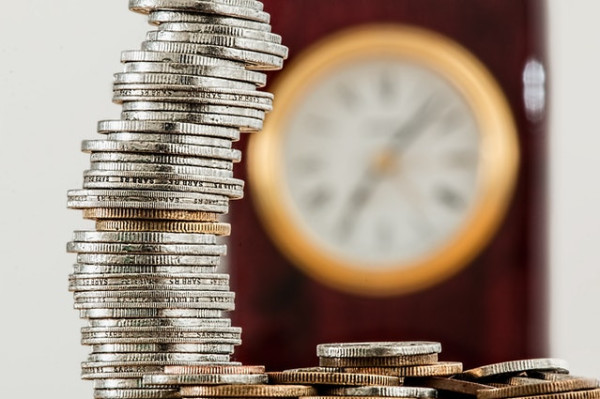

Comparing the second quarter of this year with the second quarter of last year, we have gone from the biggest decline in earnings to the biggest rebound.
The numbers we are seeing are very significant. In the US, year-on-year earnings growth this quarter is 65 per cent; in the EU, which suffered a more severe decline with the pandemic, we are seeing 140 per cent growth – so earnings are expected to have more than doubled.
Despite the consistent upgrades to earnings that analysts have been making since the middle of last year, companies keep on beating forecasts.
Usually, there are more analyst downgrades than upgrades, but that is certainly not the case at present. Upgrades are high and companies are likely to keep exceeding those expectations.
Obviously, this is not the first quarter of recovery. US earnings stopped shrinking in the middle of last year and their growth rate continued accelerating into this year.
The last four quarters have created a double-digit surprise to earnings growth; in other words, the past few quarters of corporate releases have seen corporates exceeding analysts’ projections by an unusually wide margin.
The question is: are we going to see ‘surprise fatigue’ setting in?
Investors may be getting too used to these positive surprises to the upside, so they may not generate the euphoric reaction in share prices that we saw last year.
Currently, we are in the biggest recovery of earnings experienced since the global financial crisis. Does it mean that the best is now behind us? Yes, we are now likely at peak earnings growth.
Expect the earnings growth to substantially slow down from here, as the current rate is not sustainable. We have had some overheating, so it is natural we will now have some cooling.
However, it remains a very strong environment for revenues and profit. Right now, we are likely at peak growth rate, peak inflation, peak activity, but not peak earnings – these will likely grow for some time. But probably not at the same rate.
There is no reason to be spooked by any slowdown in earnings growth. The above-trend nominal GDP forecasts highlight an environment for strong revenue growth. This typically translates into robust profit growth, even in the environment of cost pressures that we see today. If corporate profitability keeps growing, the share price will typically follow.
So far, we have only had a small sample of corporates reporting, but the results are reassuring with the majority (90 per cent) of companies exceeding analyst projections so far.
Earnings seasons typically kick off with banks' releases – their profits were expected to double versus the same quarter last year and most of the names in the sector exceeded these projections. These 'beats' have not been due to robust loan growth or strong interest income, but were largely attributed to the write backs of provisions for bad loans. Investment banking has held up well due to strong trading activity and roaring merger and acquisition deals boosting investment profits.
Other companies giving strong examples of stellar earnings growth include Pepsico, which has had very good results with earnings up 20 per cent year-on-year. As restaurants and bars have reopened across the world, it has raised its guidance.
After five loss-making quarters, Delta Airlines has returned to profit, as domestic traffic has now recovered to pre-pandemic levels and government Covid aid offset some of its costs.
Fastenal, the distributor of safety and construction equipment, has also exceeded both revenue and earnings projections. It is a very cyclical business, very responsive to industrial rebound. The demand environment is strong but unsurprisingly costs are becoming a concern, especially in relation to labour and transportation.
A deceleration in the EPS growth rate is inevitable and has the potential to create negative headlines and become a source of market volatility. The current cyclical rebound cannot be sustained forever, but the current profit cycle may still have some way to go.
Karolina Noculak is investment director at Aberdeen Standard Investments




